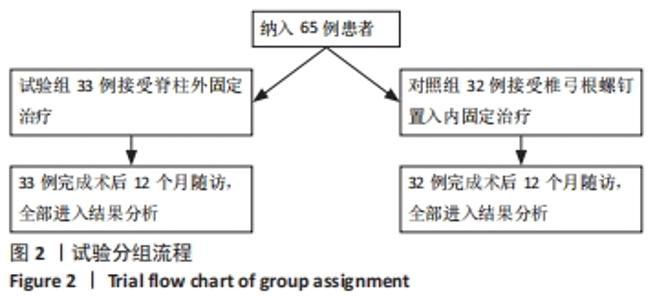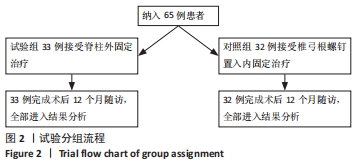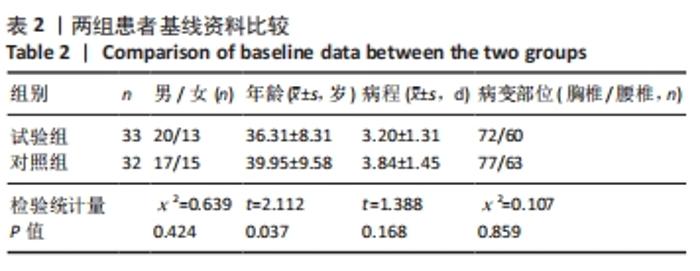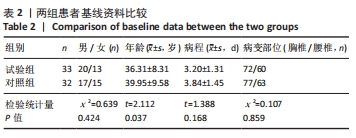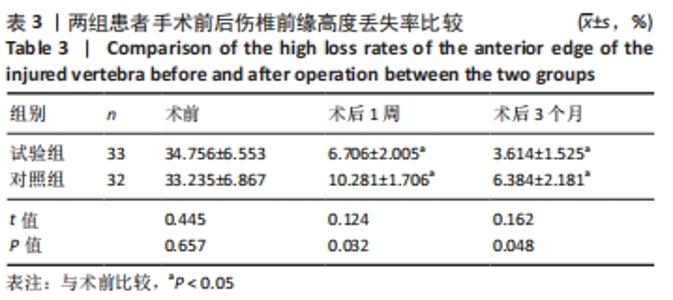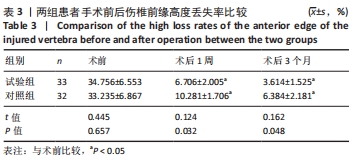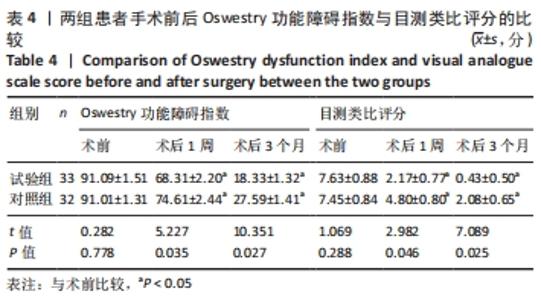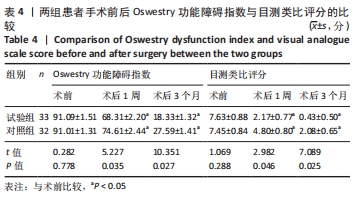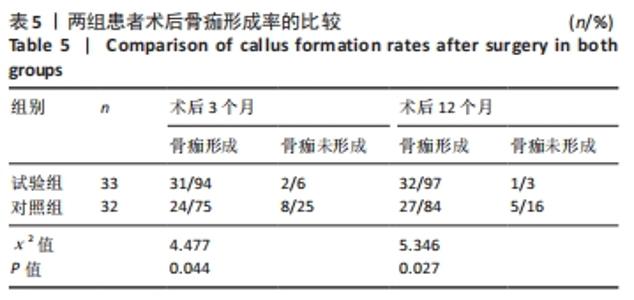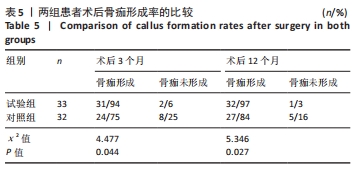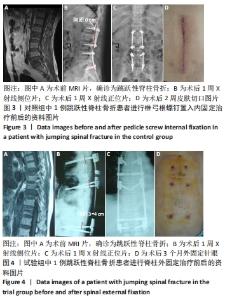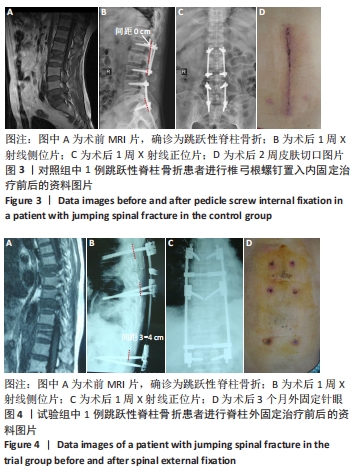[1] KORRES DS, BOSCAINOS PJ, PAPAGELOPOULOS PJ, et al. Multiple level noncontiguous fractures of the spine. Clin Orthop Relat Res. 2017;411: 95-102.
[2] SHI L, DENG R, LONG QY, et al. Endoscopically-Assisted Percutaneous Unilateral Atlantoaxial Screw-Rod Nonfusion Fixation Treatment for Type II Odontoid Fractures in Geriatric Patients: Case Series and Technical Note. Pain Physician. 2020;23(2):E241-E250.
[3] PURVIS TE, DE LA GARZA-RAMOS R, ABU-BONSRAH N, et al. External fixation and surgical fusion for pediatric cervical spine injuries: Short-term outcomes. Clin Neurol Neurosurg. 2018;168:18-23.
[4] 杨勇.经皮椎体成形术治疗跳跃性多节段脊柱骨折的手术效果评价[J].中国现代药物应用,2021,15(4):55-57.
[5] 王程,阙伊辰,宋西正,等.新型外固定器联合椎体植骨在相邻双节段胸腰椎骨折中的应用[J].中国骨伤,2018,31(8):714-717.
[6] TASHJIAN RZ, HUNG M, KEENER JD, et al. Determining the minimal clinically important difference for the American Shoulder and Elbow Surgeons score, Simple Shoulder Test, and visual analog scale (VAS) measuring pain after shoulder arthroplasty. J Shoulder Elbow Surg. 2017;26(1):144-148.
[7] PRATT RK, FAIRBANK JC, VIRR A. The reliability of the Shuttle Walking Test, the Swiss Spinal Stenosis Questionnaire, the Oxford Spinal Stenosis Score, and the Oswestry Disability Index in the assessment of patients with lumbar spinal stenosis. Spine (Phila Pa 1976). 2002;27(1):84-91.
[8] 徐海栋,史新瑞,刘刚,等.胸腰椎骨折伤椎置钉临床疗效评估及椎体前缘高度丢失原因分析[J].临床与病理杂志,2016,36(1):32-37.
[9] FISHER JS, KAZAM JJ, FUFA D, et al. Radiologic evaluation of fracture healing. Skeletal Radiol. 2019;48(3):349-361.
[10] SAKITANI N, IWASAWA H, NOMURA M, et al. Mechanical Stress by Spasticity Accelerates Fracture Healing After Spinal Cord Injury. Calcif Tissue Int. 2017;101(4):384-395.
[11] RAUSCH V, SEYBOLD D, KONIGSHAUSEN M, et al. Basic principles of fracture healing. Orthopade. 2017;46(8):640-647.
[12] YU X, GUO Y, KANG Q, et al. Effects and mechanisms of mechanical stress on secondary fracture healing. Front Biosci (Landmark Ed). 2019; 18:1344-1348.
[13] WOOD KB, LI W, LEBL DR, et al. Management of thoracolumbar spine fractures. Spine J. 2016;14(1):145-164.
[14] 赵立勇,杨东,王蛟,等.肌间隙入路伤椎置钉与跨伤椎置钉术治疗胸腰椎骨折的临床研究[J].中国中医骨伤科杂志,2016,24(3):29-32.
[15] TIAN F, TU LY, GU WF, et al. Percutaneous versus open pedicle screw instrumentation in treatment of thoracic and lumbar spine fractures: A systematic review and meta-analysis Medicine (Baltimore). 2018; 97(41):e12535.
[16] 许志宏.用短节段椎弓根钉内固定术治疗非相邻型多节段脊柱骨折的效果研究[J].当代医药论丛,2019,17(9):96-97.
[17] 阙伊辰.新型脊柱外固定系统在多节段胸腰椎骨折中的临床应用[D].衡阳:南华大学,2019.
[18] RUNYAN CM, GABRICK KS. Biology of Bone Formation, Fracture Healing, and Distraction Osteogenesis. J Craniofac Surg. 2017;28(5):1380-1389.
[19] BOTTLANG M, SCHEMITSCH CE, NAUTH A, et al. Biomechanical Concepts for Fracture Fixation. J Orthop Trauma. 2017;29 Suppl 12:28-33.
[20] 王程,宋西正,晏怡果,等.串联式经皮椎弓根钉外固定系统治疗多节段非相邻型胸腰椎脊柱骨折[J].中国中医骨伤科杂志,2018, 26(5):35-38.
[21] FAN W, GUO LX. The effect of non-fusion dynamic stabilization on biomechanical responses of the implanted lumbar spine during whole-body vibration. Comput Methods Programs Biomed. 2020;192:435-441.
|
